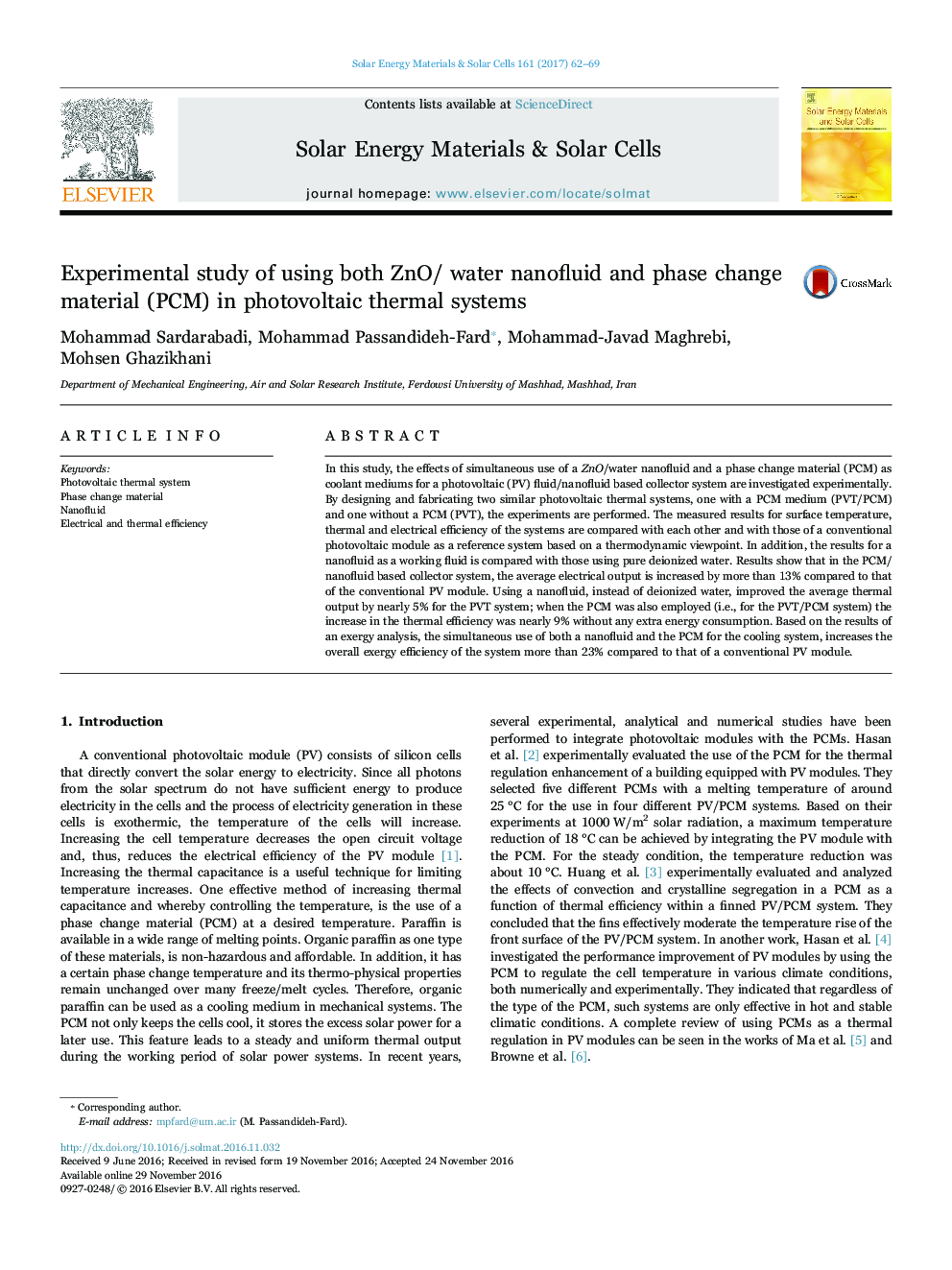| Article ID | Journal | Published Year | Pages | File Type |
|---|---|---|---|---|
| 6456992 | Solar Energy Materials and Solar Cells | 2017 | 8 Pages |
â¢Two PVT configuration, PVT/fluid based and PVT/fluid/PCM based, are fabricated.â¢The Effects of simultaneous use of nanofluids and PCM in PVT systems is studied.â¢Experiments are performed on ZnO/water nanofluid (0.2 wt%) and Paraffin wax.â¢Results are analyzed and compared from both exergy and energy viewpoints.â¢PVT with PCM/Nanofluid increases the thermal energy output by 48%.
In this study, the effects of simultaneous use of a ZnO/water nanofluid and a phase change material (PCM) as coolant mediums for a photovoltaic (PV) fluid/nanofluid based collector system are investigated experimentally. By designing and fabricating two similar photovoltaic thermal systems, one with a PCM medium (PVT/PCM) and one without a PCM (PVT), the experiments are performed. The measured results for surface temperature, thermal and electrical efficiency of the systems are compared with each other and with those of a conventional photovoltaic module as a reference system based on a thermodynamic viewpoint. In addition, the results for a nanofluid as a working fluid is compared with those using pure deionized water. Results show that in the PCM/nanofluid based collector system, the average electrical output is increased by more than 13% compared to that of the conventional PV module. Using a nanofluid, instead of deionized water, improved the average thermal output by nearly 5% for the PVT system; when the PCM was also employed (i.e., for the PVT/PCM system) the increase in the thermal efficiency was nearly 9% without any extra energy consumption. Based on the results of an exergy analysis, the simultaneous use of both a nanofluid and the PCM for the cooling system, increases the overall exergy efficiency of the system more than 23% compared to that of a conventional PV module.
